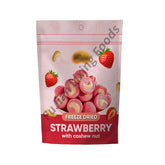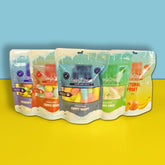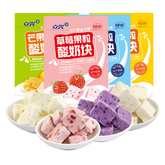Competitive Analysis of Freeze-Dried Candy in the Market
Competitive Analysis of Freeze-Dried Candy in the Market
Freeze-dried candy is gaining momentum in the confectionery industry, offering a novel twist on traditional sweets. This innovative candy form brings distinct advantages but also faces certain challenges in the competitive market. Below, we delve into the strengths and weaknesses of freeze-dried candy, providing a comprehensive view of its position in the marketplace.
Strengths of Freeze-Dried Candy
1. Unique Texture and Flavor
One of the most significant advantages of freeze-dried candy is its unique texture. The freeze-drying process creates a light, airy, and crunchy consistency that stands out from the traditional chewy or hard candies. This novel texture is appealing to consumers seeking new and exciting sensory experiences. Additionally, the freeze-drying process intensifies the natural flavors of the ingredients, offering a more concentrated and vibrant taste that can be highly attractive to those looking for a flavorful treat.
2. Nutritional Benefits
Freeze-drying preserves the nutritional content of the ingredients, making freeze-dried candy a potentially healthier option compared to conventional candies. This method retains vitamins, minerals, and antioxidants that are often lost in other preservation techniques. For instance, freeze-dried fruit candies maintain the nutritional benefits of fresh fruits, making them a better choice for health-conscious consumers who crave sweetness without compromising on nutrition.
3. Longer Shelf Life
The removal of water during the freeze-drying process significantly extends the shelf life of freeze-dried candy. This makes it an excellent option for long-term storage and reduces the need for artificial preservatives. The prolonged shelf life is particularly beneficial for retailers and consumers looking for durable products that do not quickly spoil, offering convenience and reducing waste.
4. Appeal to Specialty Markets
Freeze-dried candy appeals to niche markets such as vegan, gluten-free, and allergen-free segments. The ability to create candy that meets specific dietary requirements without compromising on taste or texture allows manufacturers to cater to a broader audience. This versatility in product formulation can capture a diverse consumer base seeking specialized confectionery products.
Weaknesses of Freeze-Dried Candy
1. Higher Production Costs
The freeze-drying process is more expensive than traditional candy manufacturing methods. This increased cost is due to the specialized equipment and longer processing times required to freeze-dry products. Consequently, freeze-dried candies often come with a higher price tag, which can be a deterrent for cost-sensitive consumers. The premium pricing might limit its accessibility and popularity among a broader audience.
2. Limited Awareness and Market Penetration
Despite its benefits, freeze-dried candy is still relatively new to many consumers. There is a lack of widespread awareness about the product and its advantages. Building consumer awareness and educating the market requires significant marketing efforts and resources. Until freeze-dried candy becomes more mainstream, it may struggle to compete with well-established traditional candy brands.
3. Sensitivity to Humidity
Freeze-dried candy is highly sensitive to moisture and humidity. Once exposed to air, the candy can quickly absorb moisture, losing its crisp texture and becoming soggy. This sensitivity requires careful packaging and storage conditions, adding to the complexity and cost of distribution and retail.
4. Perception of Novelty
While novelty can be an advantage, it can also be a double-edged sword. Some consumers may perceive freeze-dried candy as a gimmick or be hesitant to try it due to its unfamiliarity. Overcoming this skepticism requires strategic marketing and positive consumer experiences to build trust and acceptance in the market.
Conclusion
Freeze-dried candy presents a compelling case with its unique texture, intensified flavor, nutritional benefits, and extended shelf life. These strengths position it well in the market, particularly among health-conscious and specialty consumers. However, higher production costs, limited consumer awareness, sensitivity to humidity, and perceptions of novelty present significant challenges.
For freeze-dried candy to succeed in the competitive market, manufacturers need to focus on educating consumers, improving cost-efficiency, and ensuring robust packaging solutions. With the right strategies, freeze-dried candy has the potential to carve out a significant niche in the confectionery industry, appealing to those seeking innovative and healthier alternatives to traditional sweets.















